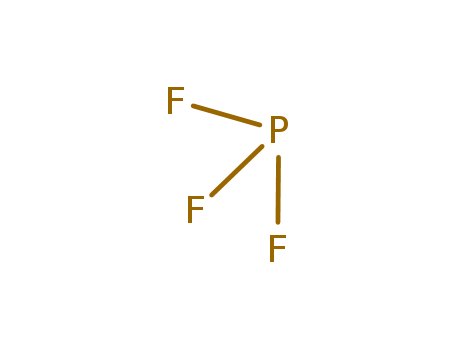10.1021/ic900633k
The study focuses on the formation and calculations of simple terminal triplet pnictinidene molecules, specifically N÷MF3, P÷MF3, and As÷MF3, where M represents Ti (Titanium), Zr (Zirconium), and Hf (Hafnium). The researchers used laser-ablated atoms of Ti, Zr, and Hf and reacted them with NF3 (Nitrogen trifluoride), PF3 (Phosphorus trifluoride), or AsF3 (Arsenic trifluoride) to produce the triplet state terminal pnictinidene molecules. These molecules were trapped in an argon matrix and identified through infrared spectra and theoretical calculations. The purpose of using these chemicals was to investigate the formation and properties of these novel molecules, which are of interest due to their unique electronic structures and potential applications in understanding reactive intermediates and organometallic chemistry. The study aimed to understand the bonding interactions and stability of these molecules, providing insights into the weak π bonding between the pnictinidene elements (N, P, As) and the early transition metal group 4 elements (Ti, Zr, Hf).
10.1021/ic400756z
The research focuses on the synthesis of phosphorus(V) complexes with acyclic monoaminocarbene ligands through an oxidative addition reaction. The purpose of this study was to expand the family of carbene precursors for main-group-element compounds, specifically targeting asymmetric (difluoroorganyl)dimethylamines with only one amino group attached to the -CF2 function. The researchers aimed to overcome the limitations of traditional methods that require carbene ligands to be isolated in their free form, which is not feasible for all carbenes due to their reactivity. The key chemicals used in this process include (difluoroorganyl)dimethylamines, RCF2NMe2 (where R = H, Ph, tBu), which served as carbene precursors for phosphorus trifluoride in the oxidative addition reaction. The reaction yielded complexes of phosphorus pentafluoride with acyclic carbenes, which are otherwise challenging to access. The study concluded that the family of carbene precursors has been successfully extended to include asymmetric (difluoroorganyl)dialkylamines, and an improved synthesis of the starting materials was also presented. The researchers observed that the C?P bond length varied significantly between the synthesized compounds, with the shortest bond length found in the complex with the hydrogen substituent (4-H). The products were sensitive and tended to decompose if kept in the reaction mixture, but pure compounds were stable under a nitrogen atmosphere at room temperature for several weeks.
10.1021/ic400756z
The research focuses on the synthesis of phosphorus(V) complexes with acyclic monoaminocarbene ligands through an oxidative addition reaction. The purpose of this study was to extend the family of carbene precursors for main-group-element compounds, specifically by using asymmetric (difluoroorganyl)dimethylamines, RCF2NMe2 (R = H, Ph, tBu), as carbene precursors for phosphorus trifluoride. The researchers successfully synthesized complexes with sterically nondemanding asymmetric and acyclic carbenes that are not accessible through the free carbene route. The chemicals used in the process included difluorobis(dialkylamino)methane (1) and its cyclic analogue as precursors, as well as PF3, which upon reaction with the asymmetric precursors 3-R, yielded the corresponding carbene complexes of phosphorus pentafluoride 4-R as colorless solids. The study concluded that the C?P bond length varied significantly between the three title compounds, with the shortest found in 4-H, and that the variation might be attributed to steric rather than electronic effects. The products were sensitive and tended to decompose if kept in the reaction mixture, but the pure compounds were stable under a nitrogen atmosphere at room temperature for several weeks.



 T
T


